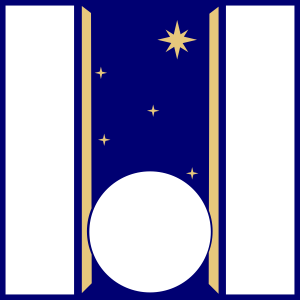The First Diffraction Limited Images From TNG with the Pyramid Wavefront Sensor
The Adaptive Optics module of TNG (AdOpt@TNG) has completed a further step towards the achievement of high resolution images under regular seeing conditions. AdOpt@TNG is the only AO system permanently mounted on an astronomical telescope to use the Pyramid Wavefront Sensor and during the nights of April 29th and 30th, 2002 (with seeing around 0.8-1.0 arcsec in V) it has been possible to acquire diffraction limited images of stars in K' band (FWHM=0.12arcsec at 2.2microns). The Strehl Ratio of most of the images was between 20% and 30% and in some cases even more, up to the 35% of picture 1.

|
Picture 1: Diffraction limited image of a mV=5.4 star in K' band (2.2microns). The first Airy's Ring is clearly visible even if not complete. Most part of the 2 nights was used to tune the loop parameters (like the WFS CCD exposure time, the gain of the loop, the number of modes to be used in the reconstruction matrix...) to check the stability of the system and to measure up to which magnitude the loop could be closed. Actually we have been able to correct only up to 21 Zernike modes at 50Hz on the brightest stars while for the faintest magnitudes we stopped at mV=8.6 because the image quality began to drop. This poor limit is due to light losses (~2.5 mag) of the system which also includes two beam splitters before the WFS CCD. Furthermore, the system is still affected by non common path aberrations and by some "crazy" actuators behind the DM which have been masked with a Babinet Stop (this could also explain the not complete Airy's first ring). A few double stars like the one in Picture 2 were finally used to check the uniformity of the PSF acroos the field. |

|
Picture 2: Two stars with 27arcsec separations shows the variation of SR on the PSF across the field. Loop was closed on the brightest star. (The distance between the stars and their intensity are not in scale in this image).
We would like to thanks all the people who helped AdOpt@TNG
to obtain this preliminary results. |

Picture 3: Animated GIF of 15 images: SR between 20 and 30%
For any comments please contact Adriano Ghedina.

